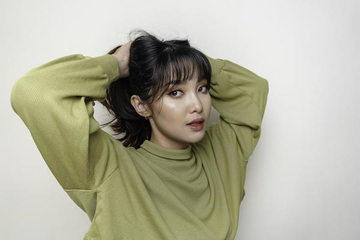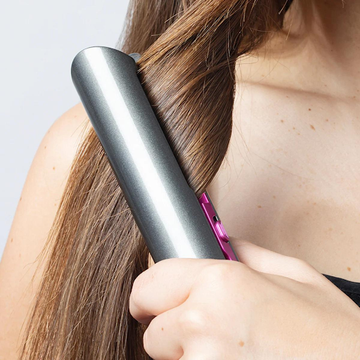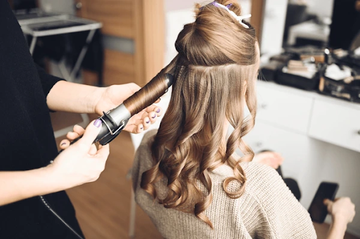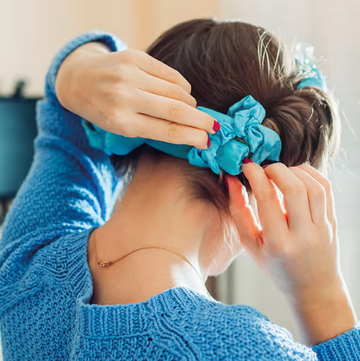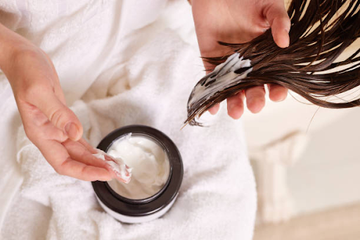The most flattering styles for full or partial forehead coverage
Let’s get one thing clear right away: choosing a haircut that frames or covers your forehead doesn’t mean you’re trying to hide. It means you understand proportions, know what flatters your features, and want a style that makes you feel like your most confident self.
Whether you’re looking to soften a high hairline, balance facial features, or simply love the vibe that fringe brings, there are so many chic and wearable haircuts that cover forehead areas without feeling heavy, outdated, or high-maintenance.
From modern bangs to subtle face-framing layers, these are the forehead-friendly styles that offer coverage, confidence, and personalization. Because the best haircut isn’t about following a trend. It’s about choosing what feels good on you.
Why you might want forehead coverage
We all have different relationships with our features. Some people love a wide forehead and lean into sleek ponytails and high buns. Others feel more comfortable with a bit of softness around the face. If you’ve ever asked yourself, “How can I hide my forehead with hair?” You’re not alone.
Some common reasons people want more forehead coverage include the following.
– A naturally higher or more prominent hairline
– Thin or sparse areas at the temples or the part line
– A strong or square forehead shape
– The desire for more face-framing dimension or softness
– A simple style change that feels fresh and flattering
It’s less about covering up and more about knowing how to work with your face shape to create harmony. Luckily, hair is one of the easiest tools to shift the visual balance.
Fringe benefits: bang styles that flatter and frame
When it comes to hairstyles that cover the forehead, bangs are the most obvious—and versatile—option. But bangs aren’t one-size-fits-all. Different types create different effects, and the right one for you depends on your hair texture, lifestyle, and face shape.
Here’s a breakdown of the top options and how to make them work for you.
Curtain bangs
Parted down the middle and swept to each side, curtain bangs are universally flattering. They cover just enough of the forehead to soften the face without feeling heavy or boxy. This style blends well with layers and grows out easily, making it one of the most beginner-friendly options.
Best for: oval, round, and heart-shaped faces
Styling tip: Use a round brush and a blow dryer to curve the bangs away from your face, or try a flat iron and flick each side out slightly. A light-hold texture spray helps them keep shape without getting stiff.
Wispy bangs
Delicate and feathered, wispy bangs offer light coverage and tons of movement. If you're nervous about committing to a full fringe, this airy option is ideal. They work especially well with straight or wavy hair and help minimize forehead space without closing off the face.
Best for: square and long face shapes
Styling tip: Let them air dry for a slightly tousled look or use a bit of mousse and your fingers to guide them into shape. They’re great for low-effort days.
Side-swept bangs
A side part with bangs swept across the forehead is a classic move for a reason. It elongates the face, adds a bit of mystery, and creates soft angles. Side bangs are easy to style and can blend seamlessly with longer layers.
Best for: round, oval, and heart-shaped faces
Styling tip: Blow-dry the bangs in the direction you want them to fall. A small amount of styling cream at the ends can help guide the shape and hold the curve in place.
Blunt fringe
Full, straight-across bangs offer the most coverage of all. They give structure and make a bold statement, drawing attention to the eyes and cheekbones. While they require a bit more maintenance (think regular trims), the impact is worth it.
Best for: oval faces, or anyone who wants a graphic, fashion-forward look
Styling tip: Use a flat iron to smooth, and finish with a light mist of anti-humidity spray to prevent frizz or curl-up. Dry shampoo at the roots helps absorb oil between washes.
Bottleneck bangs
A newer hybrid style that combines the softness of curtain bangs with the structure of full fringe. Tapered around the eyes and fuller in the center, they follow the natural curves of the forehead and cheeks, offering gentle framing.
Best for: all face shapes, depending on how they’re customized
Styling tip: Start with a middle part, then use a round brush to give shape. Bottleneck bangs tend to hold best when styled with heat and set with a lightweight, flexible hairspray.
Choosing the right bangs for your lifestyle
Style is only one part of the equation. Your day-to-day routine plays a huge role in whether bangs will work for you.
– Low-maintenance mindset? Wispy or curtain bangs are the most forgiving. They grow out beautifully and don’t need daily styling.
– Workout often or have oily skin? Try a longer, side-swept fringe or clip-in options you can remove when needed. Blunt bangs may require more washing and upkeep.
– Fine or flat hair? A bit of fringe can add the illusion of fullness, especially when styled with a root-lifting product.
– Super thick or textured hair? Work with a stylist who understands how to thin or shape bangs properly for your texture, and consider dry cuts to see how they fall naturally.
Keeping bangs fresh between trims
Bangs look their best when they’re freshly shaped, but that doesn’t mean you need to be in the salon every week. A few smart habits will keep them looking polished between visits:
– Use dry shampoo at the roots to prevent oil buildup
– Keep a mini flat iron or round brush handy for midweek touch-ups
– Trim only when you truly can’t style them into shape
– Sleep with a satin pillowcase to avoid friction that causes creasing
Want to skip the trimming cycle altogether? A clip-in fringe gives you all the impact with none of the commitment—and you can remove it the moment your forehead wants a little air.
Let me know if you'd like to weave in any product spotlights or a quick FAQ at the end. This section now brings the blog to full length while adding high-value info for readers who are seriously considering bangs.
Using length and layers to shape the face
If you’re not a fan of bangs, you’re still in luck. There are plenty of haircuts that cover the forehead, or at least soften its appearance, without ever cutting fringe. The secret lies in smart layers and well-placed volume.
Long face-framing layers
Think soft, swooping pieces that start at the cheekbones or jawline and cascade toward the collarbone. These create natural movement that curves inward, helping to visually reduce the height of the forehead and draw attention to the center of the face.
Tip: Style with a round brush and blow dryer to flip the layers slightly inward.
Angled lobs and side parts
Long bobs that angle slightly forward work beautifully to frame the face and add coverage along the temples. Pair with a deep side part and a bit of volume at the roots, and you’ve got a subtle, face-shaping effect that requires minimal upkeep.
Tip: Use a volumizing spray or crown piece to lift the root and shift the visual proportions.
Textured waves
If your hair has a natural wave or curl, you’re already halfway there. Soft texture around the forehead breaks up straight lines and creates visual movement. You can style waves to fall slightly over the forehead or part them loosely to add softness without full coverage.
How hair texture plays a role
Your hair’s natural texture can help guide which style will look and feel best, especially when considering how to frame your forehead. Here’s what to keep in mind:
Straight hair tends to sit flat, so layering is key to add shape and movement. Consider curtain or bottleneck bangs that don’t cling to the forehead but still provide coverage.
Wavy hair offers flexibility. Loose bangs or side-swept pieces blend well into natural texture and help camouflage a longer forehead.
Curly hair needs thoughtful shaping to avoid puffiness near the hairline. Curly curtain bangs or face-framing coils can be cut dry to match your pattern and still provide shape.
Coily/kinky textures can benefit from twist-outs or sculpted styles that frame the face without pulling hair tightly away from the forehead.
Working with a stylist who understands your texture is essential. A great cut should enhance what you already have, not fight against it.
What to tell your stylist to get the look you want
Walking into a salon and asking for “something that covers my forehead” can be vague. Instead, bring clear visuals and know the right terms to use.
Here are a few talking points that help.
– “I’m looking for soft forehead coverage, not necessarily full bangs.”
– “I want layers that frame the face without making my forehead the focal point.”
– “I’d love curtain or bottleneck bangs that blend into the rest of my cut.”
– “How will this style grow out over time?”
– “What will this look like with my natural part and texture?”
Also mention things like your daily routine (do you blow-dry, air-dry, or style often?) and how much maintenance you’re up for. This will help your stylist recommend a cut that works long term, not just on day one.
Styling tricks and tools that help with forehead coverage
Once you have the right cut, small styling tweaks can enhance forehead-framing effects even more. Here are a few easy tricks to try.
– Use a root lifter or volumizing mousse near your part to create lift and soften the overall silhouette.
– Try a round brush blowout for curtain bangs to frame inward, then flip the ends out for balance.
– Finger-style waves or fringe with a bit of pomade or styling cream to shape pieces where you want them.
– Tuck one side behind the ear and pull the opposite fringe slightly across the forehead. It’s subtle but super flattering.
– Use a clip-in bang or face-framing piece for an instant style shift without commitment.
The Lauren Ashtyn Collection has customizable pieces made for these exact moments—when you want versatility, but aren’t ready for a full haircut change.
What to wear when your forehead is framed
Haircuts that frame the face tend to draw attention upward, which means everything around your head and shoulders matters more than ever. A few ways to complement your new cut:
Necklines: Off-the-shoulder tops, V-necks, and boat necks all open the space and let your fringe or layers shine.
Earrings: Studs or hoops add polish without competing with bangs; longer earrings work well with side-swept styles.
Brows: With bangs, your brows peek through. Keeping them shaped (not overly defined) enhances your overall balance.
Makeup: A pop of blush on the cheeks or a soft lip color can make forehead-framing styles feel even more intentional.
Choose your best forehead-covering fit
There’s no single right answer to styling your forehead. Some people love an open, slicked-back look. Others feel more confident with a little softness or coverage. Both are valid. It’s all about what makes you feel like yourself!
Whether you opt for full fringe, layered framing, or clip-in pieces that give you instant versatility, today’s haircuts that cover forehead areas are anything but boring. They’re stylish, personal, and totally customizable to your mood, your texture, and your face shape.
If you’re still wondering how to hide your forehead with your hair in a way that feels current and effortless, this is your sign to explore your options. Try something new. Test out a bang with a clip-in. Shift your part. Play with volume.
Because hair is about self-expression, and you get to choose how you show up!

